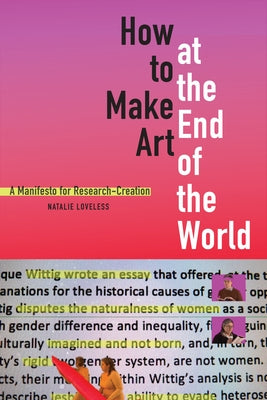Description
In recent years, the rise of research-creation-a scholarly activity that considers art practices as research methods in their own right-has emerged from the organic convergences of the arts and interdisciplinary humanities, and it has been fostered by universities wishing to enhance their public profiles. In How to Make Art at the End of the World Natalie Loveless draws on diverse perspectives-from feminist science studies to psychoanalytic theory, as well as her own experience advising undergraduate and graduate students-to argue for research-creation as both a means to produce innovative scholarship and a way to transform pedagogy and research within the contemporary neoliberal university. Championing experimental, artistically driven methods of teaching, researching, and publication, research-creation works to render daily life in the academy more pedagogically, politically, and affectively sustainable, as well as more responsive to issues of social and ecological justice.
Author: Natalie Loveless
Publisher: Duke University Press
Published: 08/09/2019
Pages: 176
Binding Type: Paperback
Weight: 0.60lbs
Size: 8.90h x 6.00w x 0.60d
ISBN13: 9781478004028
ISBN10: 1478004029
BISAC Categories:
- Art | Criticism & Theory
- Social Science | Feminism & Feminist Theory
Author: Natalie Loveless
Publisher: Duke University Press
Published: 08/09/2019
Pages: 176
Binding Type: Paperback
Weight: 0.60lbs
Size: 8.90h x 6.00w x 0.60d
ISBN13: 9781478004028
ISBN10: 1478004029
BISAC Categories:
- Art | Criticism & Theory
- Social Science | Feminism & Feminist Theory
About the Author
Natalie Loveless is Associate Professor of Contemporary Art and Theory at the University of Alberta and editor of New Maternalisms Redux and Knowings and Knots: Methodologies and Ecologies in Research-Creation.

